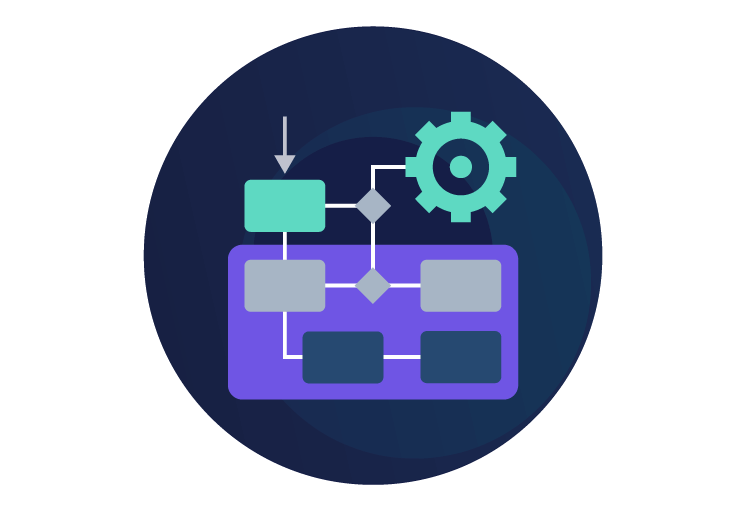Introduction
Have you ever wondered about the forces behind a company's technological strategy? Who decides which software or technology systems an organization needs to reach its objectives? Meet the Enterprise Architect - a key cog in the grand machinery of organizational structure and business strategy. This article will be your guide to understanding what an Enterprise Architect is, their responsibilities, the differences between an Enterprise Architect and other roles like Solution and Technical Architects, and much more. Whether you're considering a career in this field or looking to hire one, you're about to peel back the curtains and delve into the exciting world of Enterprise Architecture. So sit back, grab a cup of coffee, and let's get started.
"Enterprise architects think in terms of systems, while solution architects think in terms of components."
- Peter Herzum
What is an Enterprise Architect
If you're in the world of IT, you've probably come across the term 'Enterprise Architect' before. But what is an Enterprise Architect exactly? An Enterprise Architect, in the simplest terms, is a strategic role within an organization's IT architecture. They're responsible for ensuring that the business strategy and IT strategy of an organization align.
The duties of an Enterprise Architect extend beyond the technology itself. Indeed, these professionals are not just tech gurus. They must understand the business environment in which the organization operates, its strategic direction, and how to translate that into a technological context. Thus, they become vital bridges between the organization's goals and the technology that supports those goals.
In essence, an Enterprise Architect's chief concern is to craft and guide the company's IT architecture in a way that directly supports and advances the company's objectives. The goal isn't just about sustaining the business operations. It's about enabling growth, efficiencies, and competitive advantage.
These people often lead a team of architects, each with their own unique area of expertise. So, it can be said that an Enterprise Architect plays a role in the 'big picture' of an organization's technological direction, while their team members deal with the more specific aspects.
Enterprise Architect vs. solution architect vs. technical architect
When discussing enterprise architecture, three key roles often emerge: the enterprise architect, the solution architect, and the technical architect. While they all play crucial roles in the IT infrastructure of a business, they each have distinct responsibilities and areas of expertise.
Enterprise Architect
An enterprise architect is like a city planner, offering a high-level, holistic view and approach. Their purview encompasses the entire organization's IT landscape and how it aligns with business objectives. They are generally focused on long-term strategic planning and design, ensuring that all parts of an enterprise's IT environment work cohesively to meet strategic goals.
Solution Architect
The solution architect, on the other hand, operates more like an engineer building a specific block in the planned city. They specialize in designing and overseeing the implementation of specific solutions to a particular business problem or requirement. Their focus is primarily on the middle- to short-term, ensuring that applications and projects are completed correctly and on-time, to meet immediate business needs.
Technical Architect
A technical architect, lastly, is like a specialized builder, working on the technical specifications and guidelines for a particular aspect of a project. They dive deeply into the technical details and complexities of a particular system or platform and design the technical specifications for a project. Their concern is more with 'how' a solution is built, rather than 'what' is being built, or 'why'.
Understanding these different architect roles will help to better comprehend the structures within an enterprise environment. Knowing when to engage with each one and understanding their contribution to your strategic planning can be crucial for the overall success of your business.
Enterprise Architecture and its main processes
When you delve into the world of Enterprise Architecture (EA), you'll soon realize it's a vast landscape that requires a robust understanding of different processes. For simplicity's sake, let's focus on the main processes involved.
Strategy Alignment
The first step is aligning business strategy and IT strategy. This process involves understanding the business vision, goals, and strategy, and then determining the technological capabilities necessary to support these business objectives. Strategy Alignment sets the direction for all subsequent processes.
Architecture Development
Once the strategy is defined, the architect moves on to Architecture Development. This involves designing the overarching system that supports the business strategy. This could include defining the data, application, and technology architecture, and setting up standards and policies governing their use.
Architecture Implementation
The next process is Architecture Implementation. This is the actual building out—or modifying—of the systems. The enterprise architect doesn't typically do this themselves. Instead, they coordinate with different IT teams to ensure the implementation aligns with the architecture's designs and standards.
Architecture Governance
An equally critical process is Architecture Governance. Governance ensures that all implemented projects adhere to the set architectural standards and align with the business strategy. This process often involves review boards and regular audit procedures.
Change Management
Finally, we have Change Management. Technology and business goals are ever-changing landscapes. As such, the enterprise architect needs to regularly reassess the architecture to ensure it still aligns with these evolving objectives. When changes are necessary, they need to manage these effectively to minimize business disruption.
Together, these processes give a solid foundation for Enterprise Architecture. They provide the framework that allows an enterprise architect to effectively guide an organization's IT strategy and ensure it continually supports the business's strategic goals.
Enterprise Architect role description and responsibilities
An Enterprise Architect (EA) serves as a strategic guide within an organization. Tasked with envisioning and formulating a high-level overview of an organization's information technology (IT) and how it aligns with business objectives, the EA wears multiple hats. But, what exactly makes up their day-to-day tasks? Let's delve into the role description and responsibilities of an Enterprise Architect.
The Role Description of an Enterprise Architect
Enterprise Architects often find themselves at the intersection of business and technology. They work diligently to ensure that the technological framework of the company is primed to support the organization's goals. An EA isn't merely a technical leader; they also fulfill a strategic role, deciphering the needs of the business, and making sure any tech solutions correspond to these needs. Their role involves making crucial decisions that affect the entire organization.
Responsibilities of an Enterprise Architect
Enterprise Architects navigate a variety of responsibilities that typically involve the following: strategic planning, business architecture, system performance management, and facilitation of technology innovation. They ensure any architectural decisions reflect the larger strategic vision of the organization, manage the efficiency of the system's performance, and provoke technological advancement to meet future business needs.
Enterprise Architect skillset and background
In the field of information technology, an Enterprise Architect wields a unique blend of technical expertise, business acumen, and leadership skills. This role requires an in-depth understanding of the business strategy and the IT infrastructure required to support it. Accordingly, the Enterprise Architect should possess a unique skill set.
Technical skills
An Enterprise Architect needs a strong foundation in IT and related technologies. This includes:
- IT Infrastructure: Knowledge of various IT systems, network configurations, security protocols, and hardware.
- Software Development: Understanding of various programming languages, software development methodologies, and design patterns.
- Data Architecture: Proficiency in designing, creating, deploying and managing an organisation's data architecture.
- Cloud Computing: Familiarity with various cloud platforms and solutions.
Business Skills
As a bridge between business and IT, an Enterprise Architect needs to:
- Strategic Planning: Participate in strategic planning and align IT with business objectives.
- Problem Solving: Identify potential bottlenecks or weak points in the IT infrastructure and propose effective solutions.
- Communication: Communicate effectively with both technical and non-technical stakeholders, explaining complex ideas in simple terms.
Leadership Skills
Enterprise Architects often lead teams of IT professionals, making leadership skills critical:
- Decision Making: Making informed decisions about IT strategies, policies, and procedures.
- Team Management: Lead and manage IT personnel effectively, fostering a positive and productive working environment.
- Change Management: Encourage and oversee the successful implementation of new technologies or procedures.
The typical background of an Enterprise Architect often includes a bachelor's degree in a relevant field such as computer science, information technology, or software engineering. Many have also gained experience by working in other IT roles before becoming an Enterprise Architect. This might include roles such as IT manager, systems analyst, or software developer. Additionally, many Enterprise Architects hold relevant professional certifications, reflecting their specialist knowledge and expertise.
Enterprise Architect certifications
Many organizations recognize the value of a certified Enterprise Architect. Not only do these certifications testify to an individual's professional knowledge and expertise, but they also validate the individual's commitment to their expertise and to staying updated in their field. Let's take a look at some of the premier certifications that can kickstart or advance your career as an Enterprise Architect.
The Open Group Certified Architect (Open CA)
Considered one of the topmost certifications in the field, the Open Group's Open Certified Architect (Open CA) Program is independent of any specific architecture framework. It involves a rigorous process, including peer reviews and a panel interview. This certification validates an architect's capabilities across all industries and domains.
Togaf® 9 Certified (The Open Group Architecture Framework)
Provided by The Open Group, the TOGAF® 9 Certified qualification ensures that the architect has a deep understanding of the standardized framework, its principles, terminology, and how it can be tailored and applied in an organization.
Archimate® 3 Practitioner
Archimate, owned by The Open Group, is a graphical language for developing architecture descriptions. The Archimate® 3 Practitioner certification validates an individual's ability to apply the language effectively in outlining organization structure, processes, information flows, and IT systems, providing valuable views to different stakeholders.
CISSP-ISSAP - Information Systems Security Architecture Professional
The CISSP-ISSAP certification, from the International Information System Security Certification Consortium, targets information security architecture. Certified individuals are proficient in developing and controlling an organization's security framework. This certification proves an enterprise architect's in-depth knowledge of security systems, making them valuable for organizations aiming to enhance their security. They can create resilient security architectures to combat current cyber threats.
Benefits of hiring an enterprise architect
Why would a company want to dedicate resources to hiring an enterprise architect? The question seems logical, yet the answers may surprise you—they are as many as they are compelling. These high-level strategists are not just gravy on the mashed potatoes of your organization, they are an integral part of the main course.
Reduction of Operational Inefficiency: One major benefit of hiring an enterprise architect is identifying and eliminating operational inefficiencies. They take a broad view of the organization and identify areas where resources are underutilized or processes that can be streamlined. This kind of design-thinking can lead to considerable cost savings over time, which can ultimately be invested back into your company to fuel even more growth.
Informed Decision-Making: Ever found yourself wishing you could see into the future? While enterprise architects don't sport crystal balls, their skills in forecasting and strategic planning could arguably be described as having 'predictive powers'. They help organizations make informed decisions by providing insights into how technology will evolve and overlap with business strategy. This forward-thinking perspective aids decision-making processes, ensuring that your company is never caught on the back foot when it comes to technological advancements and market dynamics.
"An enterprise architect operates like the captain of a ship, navigating the choppy waters of business changes and technological innovation."
Alignment of IT and Business Goals: Their job isn't confined to the realms of complex technical jargon or intricate software designs—enterprise architects play the very crucial role of aligning IT initiatives with business goals. They use their business acumen to ensure technology investments provide the maximum roi, making sure the IT department isn't just another cost center, but a key driver of business value too. It's a tall order to blend and bridge the gap between the world of business and technology, but that's what these architectural wizards are adept at.
Improves Business Agility: In the fast-paced world of business, the ability to adapt and respond swiftly to new changes is key. This is where an enterprise architect's role becomes vital. They design flexible strategies and structures that allow companies to respond quickly to changing market conditions. Their plans ensure business continuity, compliance, and resilience. That could translate to a stronger bottom line and increased competitiveness in the marketplace.
Risk Management: Overseeing the implementation of new technologies is fraught with risk - of failure, push back from employees, and wasted investment. These are the choppy waters an enterprise architect is trained to navigate. They foresee potential issues, work in collaboration with other teams to resolve them in advance, and have contingency plans ready—making them your risk management heroes.
Analysts, technicians, road-mappers, negotiators – enterprise architects wear many hats, and each of them adds value to your company in different ways. They're the proverbial glue that holds all the diverse elements of your enterprise together, working silently yet effectively in the background. So while the upfront investment may seem steep, the benefits they bring to your organization far outweigh the costs.
Conclusion
In conclusion, enterprise architects are instrumental figures in any organization. The complexity of managing IT assets and aligning them with business objectives is not an easy task, and that's where these masters of organization come into play. Their unique blend of technical expertise, business acumen, and leadership skills make them well-equipped to face the challenges of optimizing enterprise architecture.
Are enterprise and solution architects the same? Not by a long shot. While they may share some similarities, such as operating within the IT space, each has distinct roles and responsibilities that complement each other. Enterprise architects focus on aligning IT strategy with business strategy; solution architects design single solutions and work on detailed technical implementations. And lest we forget the often overlooked technical architects who get down into the intricate details of specific systems or technology stacks.
The process of enterprise architecture involves deep analyses, continuous development, sound implementation, governance, and change management. All these steps are crucial in maintaining an effective architecture that supports the business's strategic goal. An enterprise architect's role is multi-faceted, casting their nets right from strategy development to ensuring smooth change management.
And we haven’t touched on the wealth of certifications! From Open CA and TOGAF® 9, Archimate® 3 Practitioner, and CISSP-ISSAP, these certifications are milestones on an enterprise architect's journey. They're an indicator of their expertise and commitment to keeping afloat in a rapidly evolving technological environment.
The benefits of having an enterprise architect in your team are just too many to ignore. They bring the promise of efficiency, innovation, and competitive edge. So, the next time you find yourself grappling with complexities surrounding your IT strategy, remember you could probably use an expert hand, or rather, an enterprise architect.
Last Updated on 16 October, 2024










